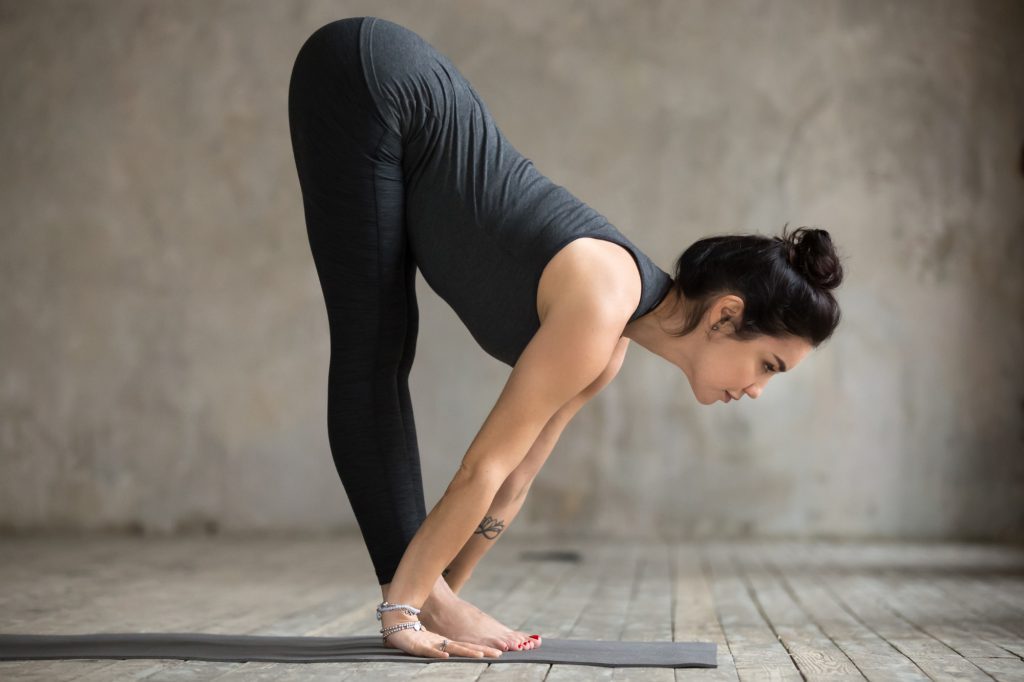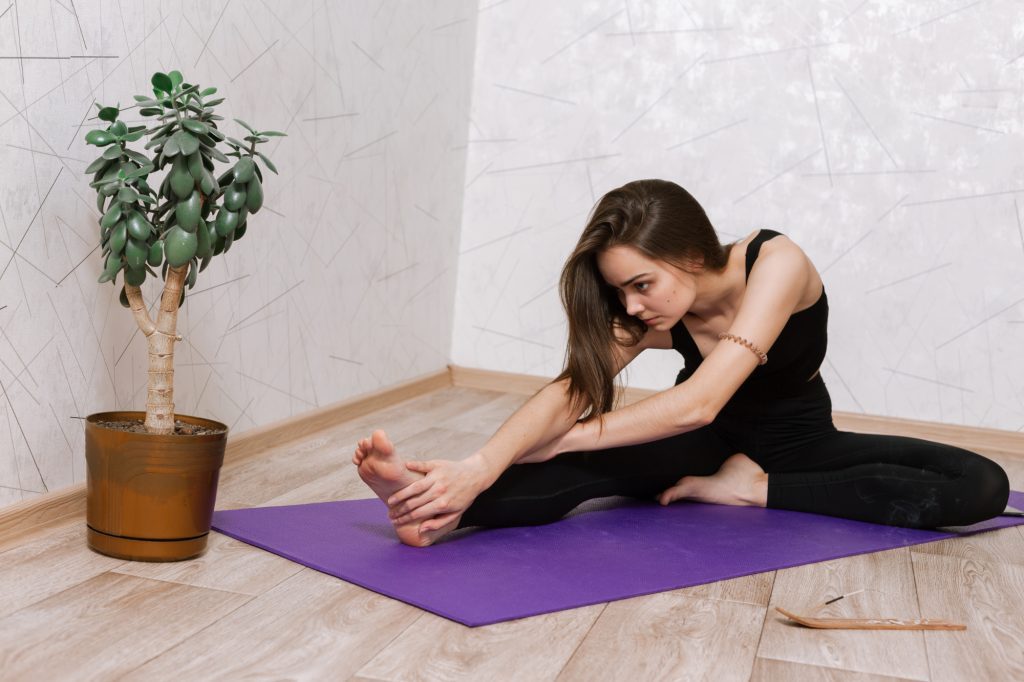Introduction to Morning Yoga Stretch Routine
It’s not always simple to get yourself up and going first thing in the morning. A combination of regular stretching and exercise has been shown to help with stress, promote flexibility, lessen low back pain, and aid in the management of various health concerns.
In this video, Rodi introduces a morning yoga stretch routine for beginners.
Beginner Yoga Poses as illustrated in Session 3 (Morning Yoga Stretch routine)
Balancing Table Top Pose (Dandayamna Bharmanasana)
The name of this pose originates from Sanskrit words: “Danda” – stick, “Yamana” – Balancing, “Brahma’ – table and “Asana” – pose
Balancing Table Top Pose, or Dandayamna Bharmanasana, is a yoga pose that involves balancing on the hands and feet while keeping the body parallel to the ground. It is a beginner-level pose that helps to improve balance, strengthen the wrists, arms, and core muscles, and increase flexibility in the shoulders and hips.
Benefits:
The core and lower back get a good workout in the Balancing Table Top Pose. It’s a nice way to stretch out the core while also getting the blood flowing and opening up the hips, shoulders, and spine. This pose is beneficial for concentration, coordination, and equilibrium because of the inherent difficulty of maintaining one’s balance while holding it. In addition to relieving stress, fatigue, and tension, the pose requires coordinated movement with the breath.

Downward Facing Dog Pose – As discussed in Session 1
High Lunge Yoga Pose (Utthita Ashwa Sanchalanasana)
The name of this pose originates from Sanskrit words: “Utthita” – raised, “Ashwa Sanchalan” – Horse riding or lunge and “Asana” – pose
Yoga’s Utthita Ashwa Sanchalanasana is a beginner yoga pose that involves balancing, stretching, and forward-bending pose and is a great way to build strength and stability. The pose strengthens the legs and thighs while also providing a spinal spine stretch and chest opening.
Benefits:
Here are some specific benefits of practicing High Lunge Yoga Pose:
- Strengthens the legs and ankles: High Lunge requires balance and stability, which helps to strengthen the muscles in the legs and ankles.
- Improves balance: The act of balancing on one leg while reaching up with the arms helps to improve overall balance.
- Increases flexibility in the hips and chest: The deep stretch in the hips and chest that is achieved in this pose helps to increase flexibility in these areas.
- Improves posture: High Lunge helps to improve posture by strengthening the muscles in the back and core, and by opening up the chest.
- Enhances lung capacity: The deep breathing that is encouraged in this pose helps to increase lung capacity and improve respiratory function.

Standing Forward Fold Pose (Uttanasana)
The name of this pose originates from Sanskrit words: “Uttana” – intense stretch and “Asana” – pose
A standing forward fold is a yoga pose that involves standing upright and then bending forward from the hips to bring the head and torso towards the legs. It is also known as “uttanasana” in Sanskrit. To do a standing forward fold, start by standing with your feet hip-width apart and your arms by your sides. Engage your core and bend forward from the hips, bringing your hands towards the floor. Keep your knees slightly bent to avoid straining your lower back. You should feel a pull in your hamstrings and lower back. To come out of the pose, slowly rise back up to a standing position, using your hands to help you lift.
Benefits:
Here are some of the benefits of this pose:
- Stretches the hamstrings, lower back, and calves: Uttanasana helps to lengthen and stretch the muscles in the back of the legs and lower back, which can improve flexibility and reduce tension in these areas.
- Calms the mind and reduces stress: The act of folding forward and letting the head and neck relax can help to calm the mind and reduce stress.
- Improves digestion: The forward fold in this pose can help to stimulate the digestive system and improve digestion.
- Increases blood flow to the head: The inverted position of the head in this pose can help to increase blood flow to the head, which can improve concentration and clarity.
- Relieves fatigue and anxiety: Uttanasana can help to alleviate fatigue and reduce feelings of anxiety by calming the nervous system.

Child’s Pose – As discussed in Session 1
One Legged Forward Fold (Janu sirsasana)
The name of this pose originates from Sanskrit words: “Janu” – knee, “Sirsa” – head and “Asana” – pose
A seated one-legged forward fold is a yoga pose that involves sitting on the ground and then folding forward from the hips to bring the head and torso towards the bent leg. It is also known as “janu sirsasana” in Sanskrit. To do a seated one-legged forward fold, start by sitting with your legs extended in front of you. Bend your left leg and place the sole of your left foot against your right inner thigh. Engage your core and lean forward from the hips, bringing your hands towards your right foot. You can either place your hands on your foot or on your shin, depending on your flexibility. Keep your right leg straight and your left leg bent to avoid straining your lower back. You should feel a stretch in your right leg and in your lower back. To come out of the pose, slowly rise back up to a seated position, using your hands to help you lift. Then repeat on the other side.
Benefits:
Some of the benefits of janu sirsasana include:
- Stretching the hamstrings and lower back: The forward fold aspect of the pose stretches the back of the legs (hamstrings) and the lower back.
- Improving flexibility: Practicing janu sirsasana can help to improve flexibility in the legs and lower back.
- Calming the mind: The forward fold position can have a calming effect on the mind and may help to reduce stress and anxiety.
- Massaging the internal organs: The forward fold position can also help to massage the internal organs, which may improve digestion and circulation.
- Improving balance: Balancing on one leg while in the pose can also help to improve balance and stability.

Conclusion
You can get your day off to a great start by doing some light yoga in the morning to stretch and relax. A typical morning stretch routine might include a combination of standing and seated stretches, as well as some basic yoga poses. Some people find that doing these stretches helps them become more flexible, others report that they experience an increase in blood flow and others report a decrease in muscle tension. Additionally, they have the potential to alleviate mental stress and worry. In general, a healthy and productive day can be ushered in with the help of a morning stretch routine. In developing your own morning stretch practice, we hope you’ll find inspiration in Rodi’s shared routines.







